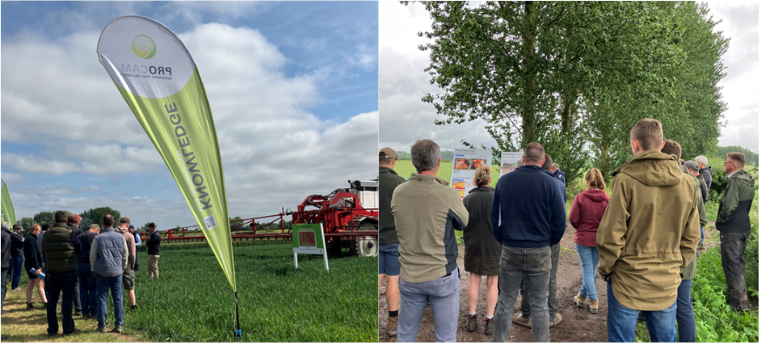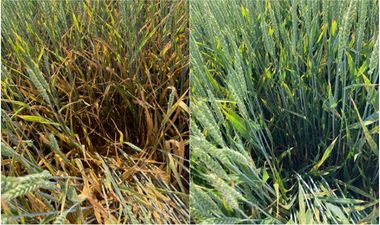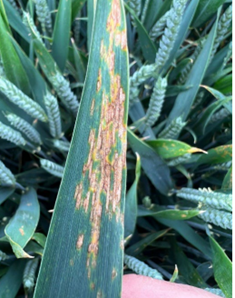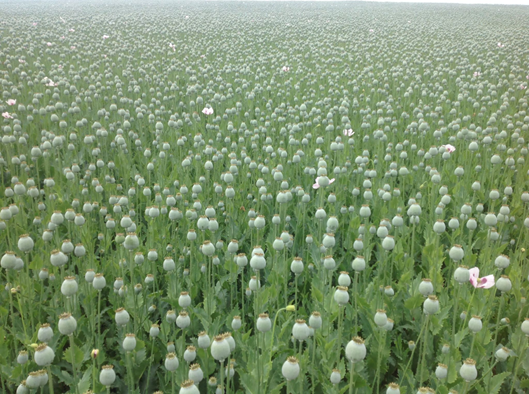A chance to get out and about …
June and July are always interesting for us as we are able to visit our customers’ open days and learn about new innovations and ways of working and, to cap it all, we saw The Wurzels play live at Cereals 2023.
If you would like to hear from Life Scientific this autumn or you’d like us to come along to one of your open days, we’d be happy to attend. To contact us use one of the methods at the foot of this newsletter.

Life in Life Scientific…
June will be remembered for the varied weather and disease levels in cereals.
Whilst the conditions were challenging for agronomists and farmers, they were a good test for our development products in field trials.
Levels of Yellow rust and septoria were significant at all our sites and we are optimistic about having useful data to share with you later in the year.
Treated versus untreated plots in ADAS Life Scientific trial

Is it Septoria?
Back in June, a number of our customers commented on some unusual disease symptoms being found in wheat. Whilst some of the symptoms looked like typical septoria with pycnidia, others had a dark brown halo. The suspicion was that this might be Ascochyta and there was a concern about control with planned fungicide programmes.
ADAS reported in Crop Action that they had tested a number of suspect samples and all had come back as Zymoseptoria tritici but the unusual symptoms could be from infection by ascospores, weather or leaf age.
We believe that the disease in our trials was septoria but every year seems to bring interesting new challenges.

Source: ADAS Crop Action, Issue No. 11.
New EAMUs
CRD have granted EAMU approvals for the use of BOSCLER (MAPP 19113) on poppies for seed production & morphine production.
The EAMU for outdoor poppy grown for seed production is 1495 of 2023 for Botrytis, dark leaf and pod spot (Alternaria spp.), poppy fire (Pleospora papaveracea), and Sclerotinia stem rot (Sclerotinia spp.). The maximum individual dose is 0.5kg/Ha, with a maximum total dose of 1.0kg/Ha per crop up to BBCH 67 (end of flowering).
The EAMU for outdoor poppy (Papaver somniferum) grown for morphine production is 1496 of 2023 for Botrytis, dark leaf and pod spot (Alternaria spp.), and Sclerotinia stem rot (Sclerotinia spp.)
The maximum individual dose is 0.5kg/Ha, with a maximum total dose of 1.0kg/Ha per crop up to and including full flowering.
Note: EAMU’s are used entirely at grower’s risk.
Ensure that all conditions and restrictions on the
Authorisation Notices are adhered to.
Planning weed control
June and July may not seem to be the time to be thinking about autumn weed control, as finalising fungicide programmes and preparing for harvest are priorities.
However, these are the months when grass weeds, including Wild-oats, Rye-grass, Black-grass and Bromes, are most obvious as they appear above the crop. This gives farmers and agronomists a good opportunity to take note of the areas that will need the most scrutiny in the autumn.
Controlling Black-grass throughout the rotation with crop type, cultivation, stale seedbeds and herbicide programmes is of course standard practice to those with experience of the weed, but we received calls this year from growers who were having difficulties with Black-grass for the first time.
Where you are experiencing a new population of Black-grass it is important to know the resistance status of the weed. It is worth considering stopping patches developing with the appropriate use of glyphosate. A robust IPM approach is vital for control and a key factor is to use herbicide active ingredients from different chemical groups in the autumn.
Using Niantic (a mixture of two ALS-inhibitors) plus Firestarter (containing flufenacet and diflufenican) can be a useful part of your herbicide programme, with activity against a range of grass and broad-leaved weeds. Check the product labels on the Life Scientific website for specific weed and application information.
